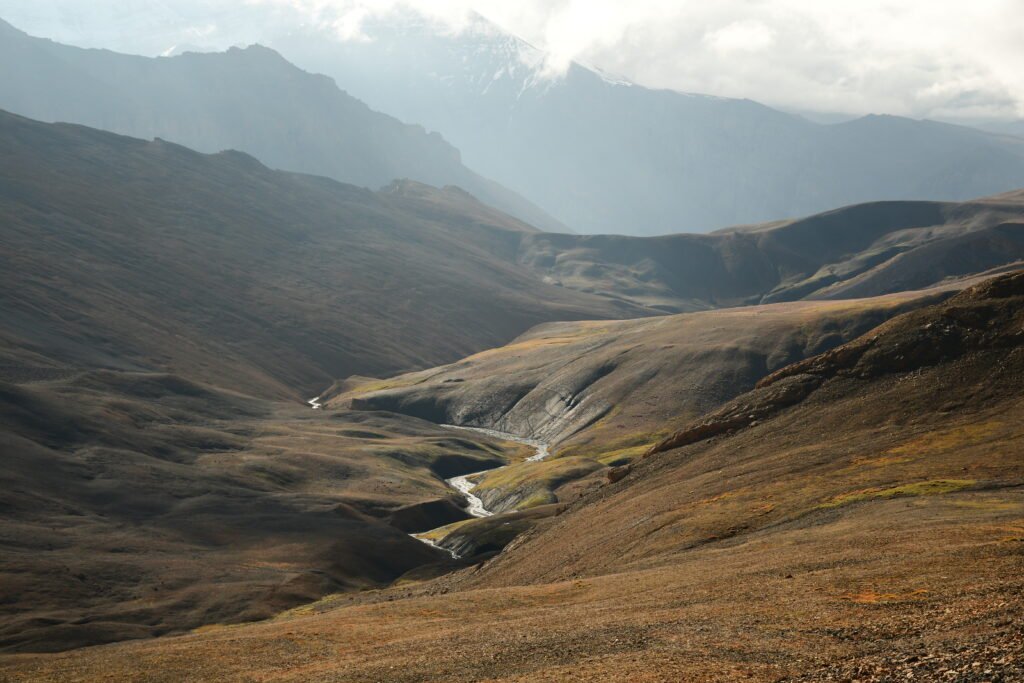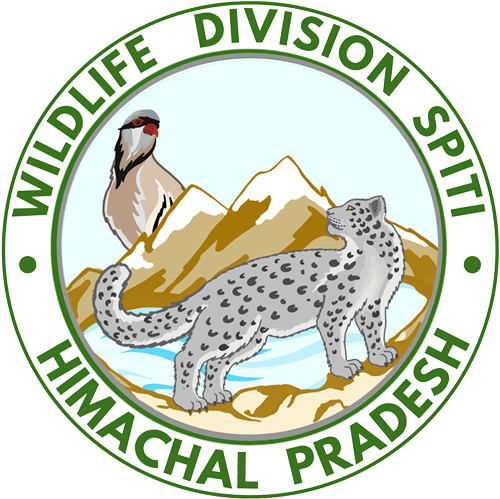General Principles
Wild is their right; wonder is your privilege
🌿 Cleanliness & Waste
If you can carry it full, you can carry it empty.
💧 Water & Streams
Water is life here – Respect the life of locals.
🐾 Wildlife Etiquette
Feeding wildlife feeds serious trouble, feed your soul – not the wildlife.
🛤️ Trails & Trekking
Stay on the trail – shortcuts cut lives.
🏔️ Mountain Spirit
Higher altitude, humblest attitude.
👥 Communities & Culture
Your adventure, their backyard – tread kindly.
🚫 General Don’ts
No drones – the skies belong to lammergeiers
Silence speaks here – let the mountains do the talking.

1. General Principles
These rules aim to minimize disturbance to wildlife, preserve natural and cultural heritage, and maintain the area’s wilderness quality.
Visitors proceed strictly at their own risk; the forest / wildlife department holds no liability for accidents, injury or losses.
The Department reserves the right to refuse entry or take actions against persons violating the code or posing risk to the environment or wildlife.
2. Access, Permits & Authorisations
Entry is allowed only via officially designated access points and trails. No unauthorized trails or entry cuts allowed.
All visitors (trekkers, guides, porters, tourists) must obtain required permits.
Visitors must carry valid ID and permit documents and show them when required by forest staff.
No drone cameras or aerial photography equipment shall be permitted without explicit prior approval from the wildlife / forest authority.
3. Trails, Movement & Habitat Protection
Stay on designated trails / routes at all times.
Do not widen trails, or create new “shortcuts” which may lead to soil erosion or habitat damage.
Do not carve, mark, or inscribe on rocks, trees, signs, or heritage features.
Avoid trampling fragile vegetation, mosses, or wet soil surfaces.
In steep terrain, avoid pushing stones or debris downslope (rockfall hazard).
Do not disturb or remove any natural feature (rocks, soil, fossils, plants).
4. Water, Streams & Sanitation
- Do not pollute natural water sources – the life of Spiti valley. Do not bathe, wash utensils, clothes, or yourself in rivers, streams, or springs (wash at least 50 m away, with biodegradable soap if unavoidable, and scatter water).
- Do not urinate or defecate near water bodies or trails.
- Toilet pits should be dug in soils away from water, trails, and camps, covered after use, and marked.
5. Waste, Litter & Cleaning
- Zero littering: all garbage (plastic, wrappers, paper, leftover food, packaging) must be collected, packed and removed from the area to designated waste disposal points.
- Separate biodegradable from non-biodegradable waste; where possible, compostable waste may be buried appropriately (away from camps and trails).
- Do not discard cigarette butts, matches, chewing gum, etc.
- If encountering others’ litter, carry it out if safe to do so – help the pristine ecosystem.
- Left campsites “cleaner than you found them”.
6. Noise, Behaviour & Wildlife Disturbance
- Maintain humble voices; avoid shouting, loud music or sound systems.
- Do not disturb nocturnal wildlife by artificial lights or noise.
- Flash photography near animals, nests, dens is prohibited.
- Do not approach, chase, harass, or feed wild animals under any circumstances.
- Maintain a safe and respectful distance from wildlife. If animals approach, retreat calmly and avoid attracting them.
- Minimize impact at dawn/dusk times – this time is sensitive for many species.
7. Campsite Management
- Use only pre-approved or designated camping zones (away from streams, ridgelines, steep slopes, and wildlife corridors).
- Avoid camping under avalanche zones or unstable slopes.
8. Emergencies, Safety & First Aid
- Carry a well-stocked first aid kit, maps and compass/GPS.
- Always inform the local authorities of your full itinerary and expected return time.
- In case of emergencies (injury, lost, natural hazards), prioritize safety, secure the party, and contact forest/park authorities.
- Do not abandon persons in distress; assist fellow trekkers, but ensure your own safety first.
- In case of rockfalls, landslips, flash floods etc., follow instructions of forest staff or experienced guides.
- Be conscious of altitude sickness, weather changes; plan accordingly.
9. Respecting Local Communities, Cultural & Heritage Sites
- Respect the rights, customs, and privacy of local (tribal or village) communities. Do not trespass on private lands without permission.
- Do not photograph people (especially locals) without their consent.
- Do not damage cultural heritage sites (temples, rock art, stupas, shrines, mani walls).
10. Scientific, Research & Educational Activities
- Scientific or survey work (sampling, cutting, instrument installation) requires prior approval and permit from forest authorities.
- Minimally invasive practices only. All sampling equipment, stakes, wires, tags, or materials must be removed after use.
- Data, reports, and findings from research must be shared with the forest/wildlife division.
11. Enforcement, Penalties & Oversight
- Forest / wildlife staff have the authority to inspect, monitor and enforce these rules.
- Violation of any rules may lead to fines, expulsion from area, revocation of permit, or legal proceedings under the Wildlife (Protection) Act, Forest Act or relevant statutes.
- Regular patrols and monitoring is being conducted to ensure compliance.
- Feedback and complaints by visitors or residents are considered seriously by the management authority.
12. Visitor Education, Briefing & Orientation
- Visitors should be provided a printed / digital brochure of the code of conduct, map of trails, emergency contacts, local species, and cultural sensitivities by the tour operators.
- Encourage safety and caring attitude among trekking groups.
